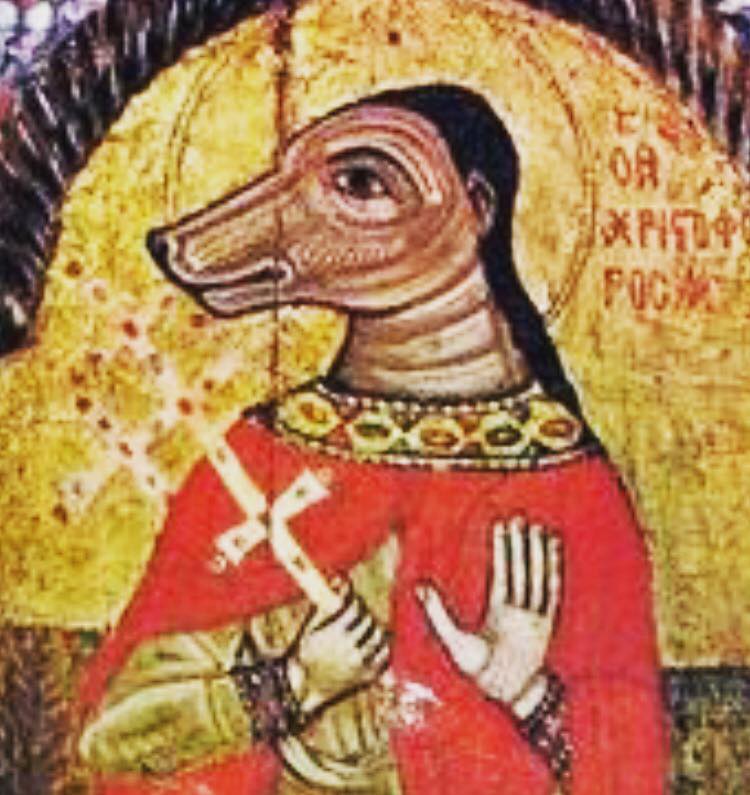National Hagiographic
Getting medieval with a round on saints

Eric Keihl is the managing editor for Questionist’s parent company, Geeks Who Drink. Each week, he will accept a reader challenge to write a entire, quiz-ready trivia round on some tricky or obscure subject. You can challenge Eric here.
This week’s theme is “medieval saints,” suggested by Keelyn Byram at Sunday Service Motor Company in Albuquerque. Thanks Keelyn!
Since we only have nine questions to fill, I decided to set a couple parameters. First, with one very notable exception, we’re only covering Roman Catholic saints. Partly because that’s what people usually mean when they say “saints” in this part of the world, and partly because Catholicism draws an especially clear line on who’s a saint and who isn’t. This sadly excludes Saint Vladimir, who was canonized by the Eastern Orthodox Church despite ruling the Kievan Rus for several years as a devoted worshiper of the pagan thunder god Perun… and the fact that he killed his own half-brother after forcibly marrying the latter’s fiancé.
Second, since Keelyn wanted medieval saints, I’ll only cover folks who were alive between 500 and 1500 CE. Thus no question on third-century Saint Lawrence, who showed a Drag Race-worthy level of sass when he told the judge who was having him roasted alive, “Turn me over, I’m done on this side.”
Now that the ground rules are in place, let’s get to hagiographizin’!
1. While bringing Christianity to Scotland, Saint Columba subdued a mysterious “water beast” terrorizing what river with a familiar name? River Ness
For all Nessie non-believers that might be rattled by this monster story, this summer a group of enthusiasts conducted a two-day search of the Loch using a hydrophone and thermal drones, and once again found naught but fish. If anyone tells you the Loch Ness Monster is real, their bum’s oot the windae, ye ken.
2. After asking a statue of the Virgin Mary to “show that you are a mother,” Saint Bernard suddenly had an eye infection get cured by a jet of… what? Breast milk
Apparently this might not be as bonkers as it sounds: Breast milk was a common treatment for ocular conditions in medieval times, and a study conducted in 2021 found that drips of breast milk actually did help babies suffering from “eye discharge.” Then again, a different study found that it can make pinkeye worse, so at the very least ol’ Bernie was taking a gamble.
3. Saint Clare founded a property-shunning order of nuns, so it makes sense that her namesake river helps connect Huron to what Great Lake with the least water? Lake Erie
The order is so austere that they’re usually called the Poor Clares, and they’ll often pay for the bare essentials by baking cookies and the like. While we’re on the subject, the best dang raisin bread on Earth is made by the Trappist monks at The Abbey of the Genesee. Seriously, it’s … habit forming. Eh? Eh?
4. Catholic killjoys tried to stamp out the worship of viper-vanquishing canine Saint Guinefort, who was what breed of dog that’s been clocked at 45 miles an hour? Greyhound


Here’s that exception I mentioned earlier: Guinefort is an unofficial French folk saint. Interestingly, St. Christopher is sometimes depicted with a dog’s head in Greek Orthodox icons, and nobody’s sure why. The most plausible explanation I’ve found is that somebody miscopied the Latin “Cananeus” (human from the land of Canaan) as “canineus” (canine.) But then, ain’t no rule says a dog can’t be a saint!
5. Benedict XVI owed his “Pope emeritus” title to Celestine V, who codified a pontiff’s right to… do what? Resign
Unlike Benedict, Celestine was only in the papal seat for a few months: He resigned to get back to the humble life of a Benedictine abbot. This didn’t work out so great: his successor saw him as a potential political threat, and clapped him in prison for the final two years of his life. At least he wasn’t thrown into the sea tied to an anchor. Or dug up after he died and put on trial.

6. Ireland’s Saint Fiacre had a millstone that softened under his butt to make him comfortable, hence his patronage of what condition that’s basically swollen anal veins? Hemorrhoids
Fiacre is also the patron of gardeners and cab drivers, rather randomly. This kind of diverse portfolio is pretty common: Balthazar, one of the Magi, is the patron saint of traveling merchants, playing-card manufacturers, epilepsy, and the city of Cologne, among other things.
7. More like “We Got the Beatified”! Jane Wiedlin played Joan of Arc in “Bill & Ted’s Excellent Adventure,” and rhythm guitar in what all-female new wave group? The Go-Go’s
Keen-eyed filmgoers might also recognize Wiedlin as the singing telegram girl who gets blown away in Clue, spoiler alert. Also, if you get my “We Got the Beatified” joke, congratulations on being cool. And old.
8. Often depicted with a mash fork in his hand, Saint Arnold told peasants to swap out water for what more-sanitary beverage during plagues? Beer
Contrary to much-repeated myth, beer was never the everyday beverage of choice, but during times of disease it was definitely safer since, you know, boiled. Conversely, 17th-century English plague outbreaks shut down many local pubs, causing a huge spike in deaths among those drinking alone at home. This latter pattern repeated itself more recently, sadly.
Bonus: Pope Francis officially venerated the still-glistening tongue of Saint Anthony of Padua in 2000, back when Francis was a mere archbishop of what South American capital? Buenos Aires
Francis is the first pope born outside of Europe in some 1,200 years, so it’s only natural that he’s been shaking things up somewhat. The previous one was Syrian-born Gregory III, who banned the consumption of horse meat in Christendom. Who’s to say which is cooler?
